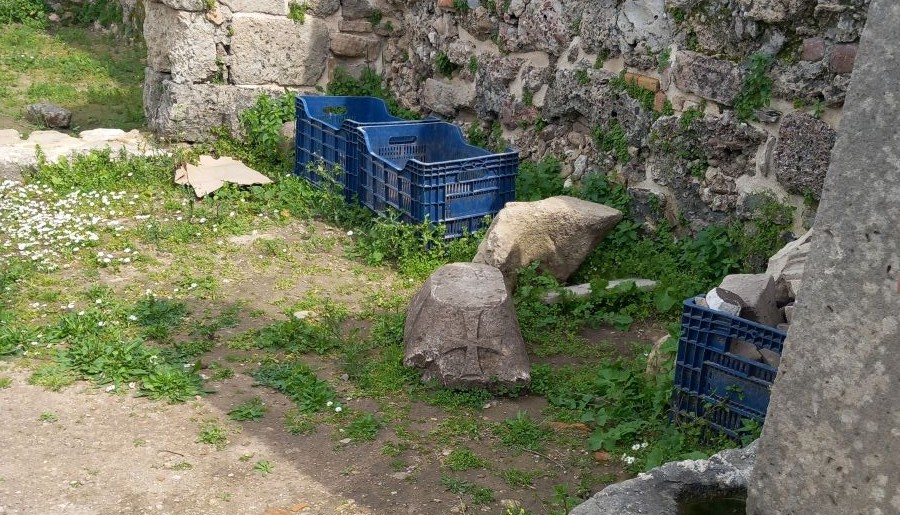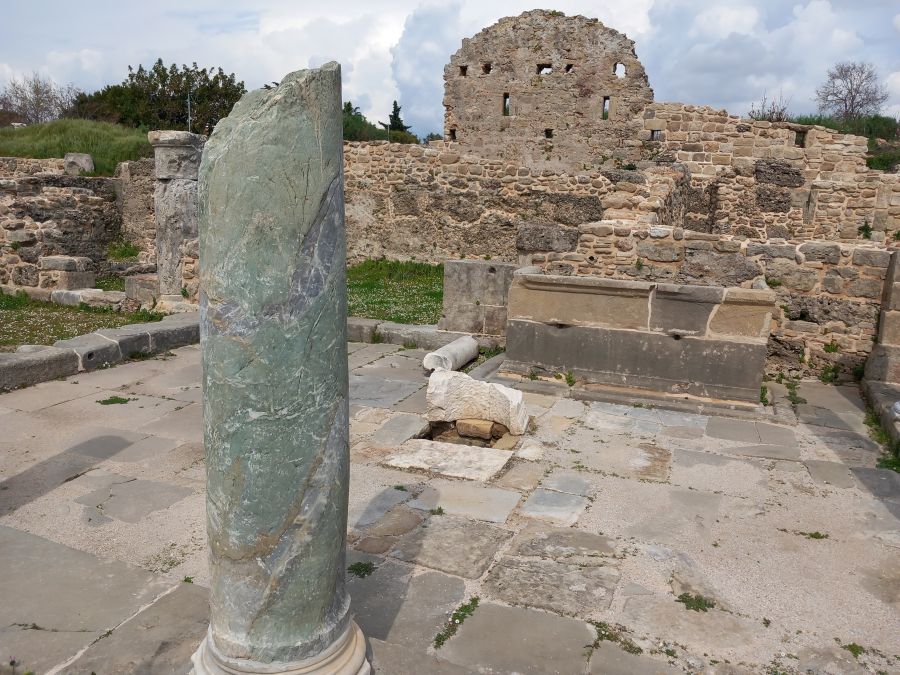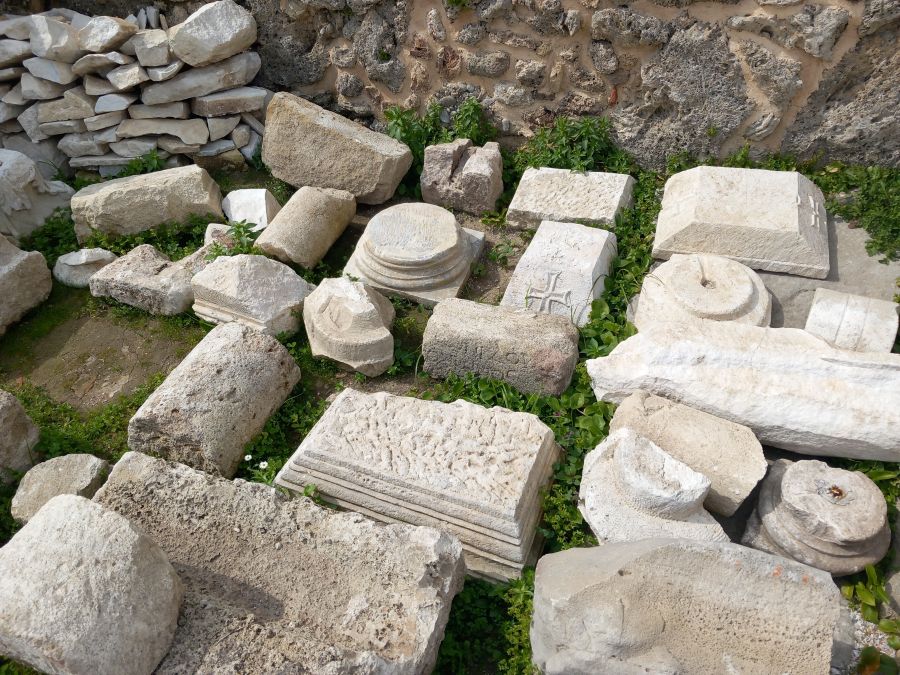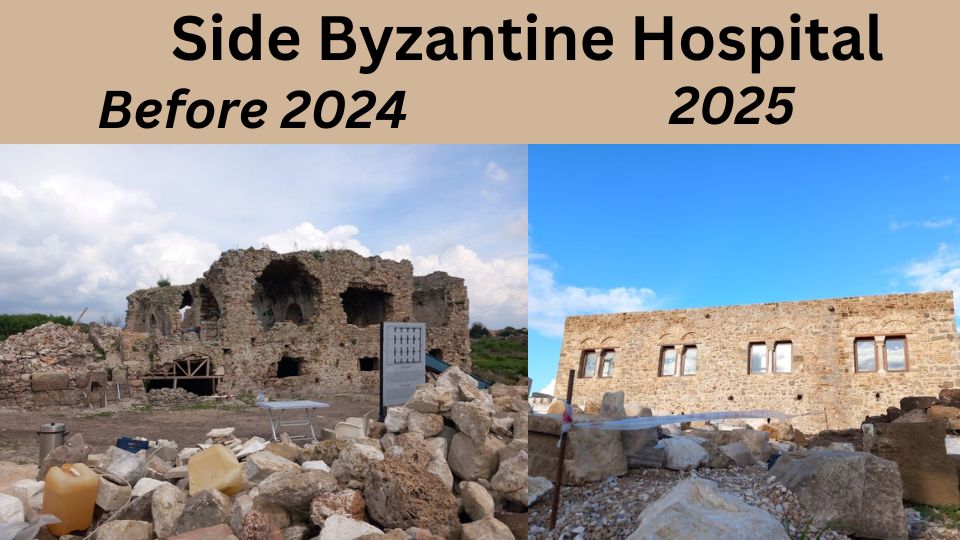- The Byzantine Episcopal Influence on the History of Side, Pamphylia
- Exploring Side, Pamphylia Hidden Byzantine Monuments
- The Lost Metropolis Episcopal Palace in Side, Pamphylia
- Discovering the Repurposed Chapel in Side Open Air Museum
- The Hidden Mosaics among the Side Market Shops – Part one
- The Hidden Mosaics among the Side Market Shops – Part Two
- The Hidden Mosaics among the Side Manavgat Shops – Part 3
- Hidden Things From Side’s Fountain to Grand Theater
- Hidden Crosses in the Side Archeology Museum
- Side’s Fascinating Basilica near Apollo Temple
- Analyzing the 12 churches and chapels of Side, Pamphylia
- Analyzing the Synagogue in Side, Pamphylia
During my visits to the Side Open Air Museum, I wandered through the residential areas of the old city. In one section, I encountered a marbled dwelling with a water trough and crosses. Where cross-entry stones are found, I assume these are found in that area and give a hint to the religious purpose at some point in history. Could this be a repurposed church?
Repurposed Church
A repurposed location means the complex is reclaimed for a Christian purpose. The Byzantine Empire united the state under the Christian unity of faith, which resulted in some secular or religious buildings in Asia Minor being used for Christian worship. This became a common practice during the 5th and 6th centuries.
Hints of a Church
The Porphyry-like cross capital sits near this spot (I’m not sure what type of marble it is, with its faded appearance), but this cross would have sat upon a column to show the place’s purpose. This location strongly suggests a repurposed use.


The marble flooring and the Verde column hint at the area’s importance. The Byzantine hospital sits beyond the partial wall in the background. Side was a very religious city with many temples, and like Ephesus, the Christians repurposed civic spaces for spiritual use.

When taking over this space, entry stone crosses would fit above a column or as part of the doorway and, in this situation, the water reservoir for religious reasons. Below are two of the entry stones found sitting behind this area.
Byzantine Hospital
Formerly, the Byzantine hospital that Justinian the Great commissions (6th century) lay in ruins (2024), but now they are restoring the location (2025). Eventually, it will be open to visits and maybe some exhibitions. In this chapel, frescoes have been found, and typically, Byzantine social care locations included a religious chapel.

The Side Ancient City provides a fascinating glimpse into the process of moving an archeology site to tourism. My video below explores this process briefly.
Exploring Side with Nakhati Jon on YouTube
Other explorations in books
Leave a Reply